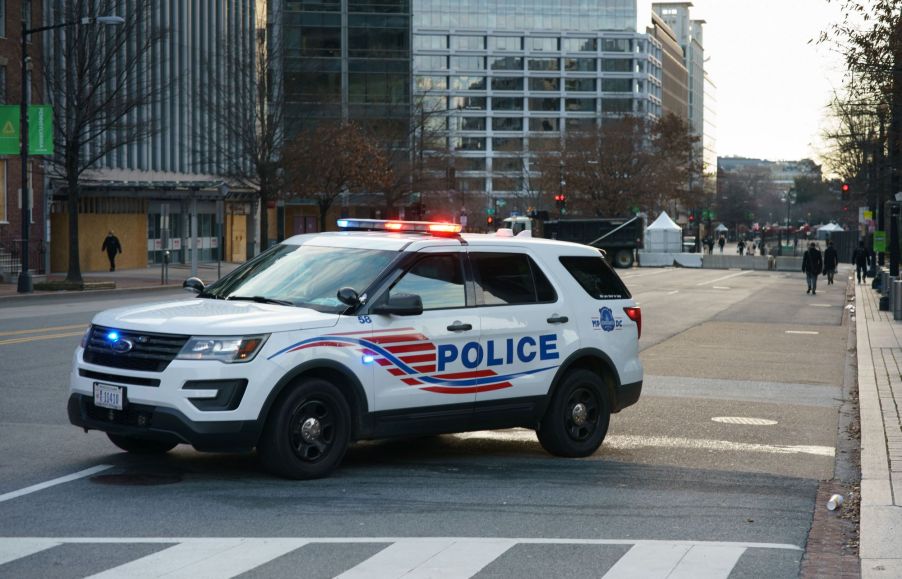
Why Do Cars Stop After a PIT Maneuver?
We can assume that when a police officer pulls someone over they are enforcing the rules of the road. That’s why it surprises many people that police have been using their cars to perform the PIT maneuver for years.
It’s a questionable chase technique that has also resulted in several deadly accidents while sometimes aiding in criminal pursuit. How does the PIT maneuver work, and why is it a popular police tactic?
What does ‘PIT’ stand for?

The ‘PIT’ acronym has many interpretations, but it’s most commonly known as the “pursuit intervention technique” or “precision immobilization technique.” To execute this tactic, the officer aligns the front wheels of their car with the back wheels of their target. The officer steers into the fleeing vehicle, causing a loss of traction for the target.
The police officer must also turn in the same direction to keep themselves clear of the targeted vehicle. This technique can’t stop the fleeing car, so it often requires another officer or two to pin the suspect from another angle.
The Fairfax County Police in Virginia first used the PIT maneuver, inspired by the bump and run technique in stock car racing. This is where one driver rams into the other’s bumper, intentionally making them spin out of control. Due to obvious safety concerns, this technique is now illegal in racing.
Why do police officers keep using the PIT maneuver?
The driver attempting to flee from police usually doesn’t know how to stop their car during a complete loss of traction. While the maneuver can’t altogether disable the car, it buys officers enough time to detain the target. Additionally, vehicles with electronic stability control (ESC), which will cause them to experience temporary reduced power from the engine.
Even if this civilian had the driving skills to recover from such an event, they’re likely too distracted. They may not anticipate the officer’s impact, so they can’t react in time. Other stimuli like flashing lights, blaring sirens, and the presence of other drivers on the road might overwhelm the target.
The officer’s tactical advantage over the target is what makes the PIT maneuver so effective. However, that doesn’t mean that it’s impossible to avoid it. For example, quickly slowing down will cause the officer to miss bumping into the target. Alternatively, if the target can keep themselves in front of the police car’s front bumper, the officer can’t get in the proper position.
Is the PIT maneuver actually safe?
In theory, the police officer must adhere to some safety rules before attempting the maneuver. Most regulations advise against using the PIT tactic when driving over 35 mph, but some departments have no restrictions. Additionally, officers are also expected to consider the weather and other surrounding cars or bystanders.
Some departments only sanction the PIT maneuver if the target is a confirmed dangerous individual. In some situations, this might cause the officer to perform the maneuver at higher speeds, using lethal force on fleeing vehicles. This can be a problem if the suspect in the car has unwilling passengers on board.
Those who don’t favor the PIT maneuver have also cited its risk when performed on cars with ESC. One study from the Department of Justice found that vehicles with these systems are more seriously impacted after the impact. ESC was made mandatory in 2012, so it’s safe to say that most vehicles on the road have this feature.
Additionally, sometimes deaths occur due to both officers executing the PIT maneuver and their targets. By August 2020, the Washington Post counted nine people dead to this technique that year alone, some of whom were minors. It’s clear that the PIT maneuver needs serious revisions or may not have a place in law enforcement at all.


